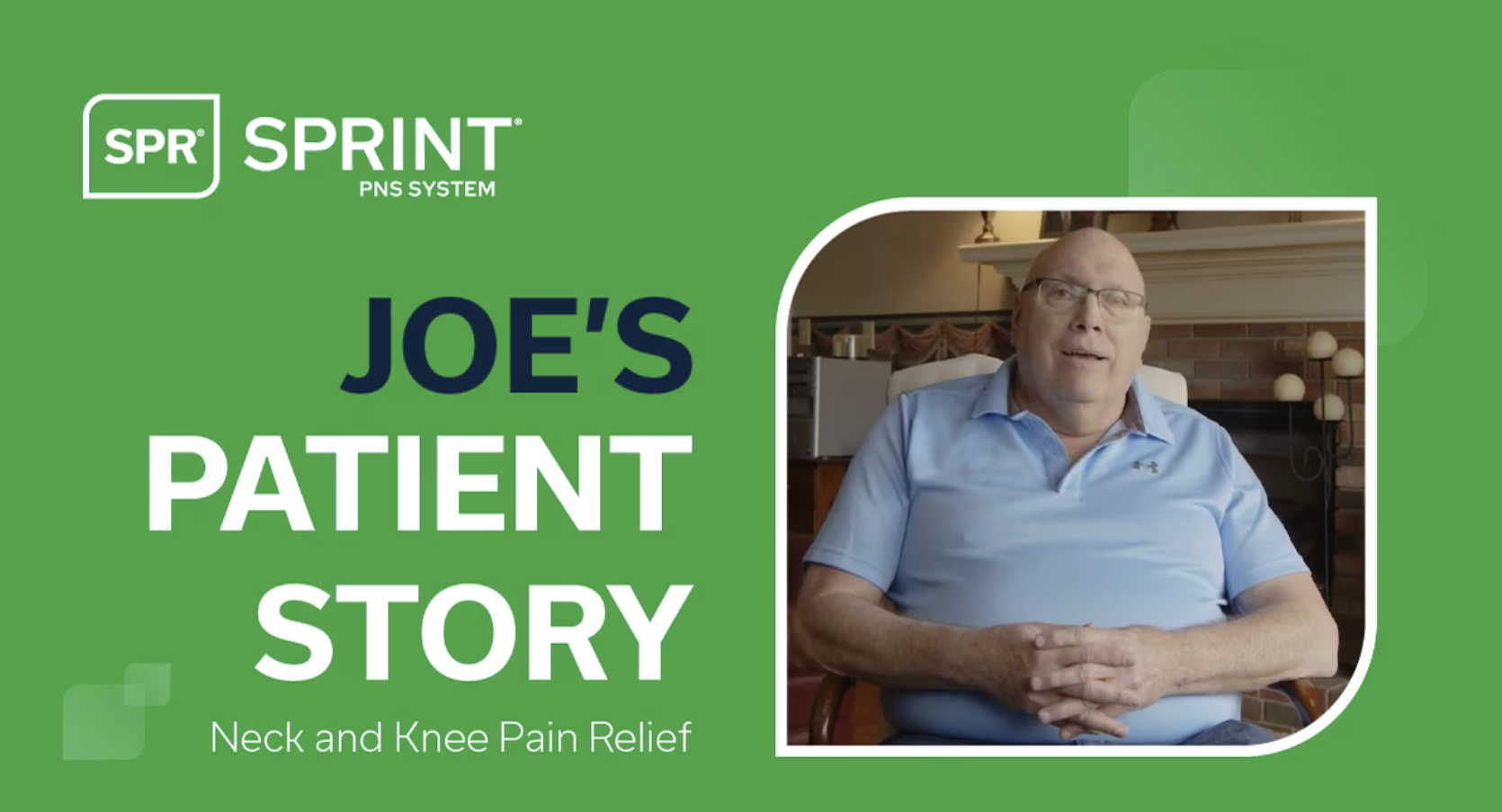Neck pain and postoperative knee pain management
During Joe’s 32-year Army career, he spent a lot of time in helicopters, moving weapon systems and other equipment to deployment sites around the world. He always had to wear a helmet, but it was very heavy, and the combination of its weight and the vibration from the helicopter strained his neck. “That constant pounding of the helmet on my head and my neck took a toll,” Joe recalls. “I eventually had to get steroid injections for the pain, which provided some relief — at least until after I retired.”
Upon retirement, Joe started a new career as a consultant, which meant more air travel. Soon his neck pain returned, but this time it came with intense migraines and radiating pain down his arms. The pain was so severe that Joe could barely turn his head to either side, impacting his ability to drive. “I couldn't even shift my glance far enough to see in my outside rear-view mirrors,” he says. “I was concerned for not only my safety, but the safety of other drivers.”
The pain also affected his ability to work: “When I got a migraine, nothing could relieve it, so I was basically losing time from work because I was down for at least one full day and sometimes two or more.” Often, while sitting at his desk, Joe’s hands would go numb, and he’d suddenly feel intense pain in his neck, and he’d have to lie down.
Even the activities Joe enjoys most — being outside, mowing and gardening his seven-acre lot, and working on cars and his antique tractor — were no longer possible. It was hard to do anything. “I really just became a lump on the couch,” he says. He felt depressed.
Joe had been seeing his regular doctor for his pain, but nothing he had tried gave him any real lasting relief. Finally, his doctor took x-rays and discovered that Joe had both degenerative joint disease and degenerative disc disease in his neck. This led to a referral to an interventional pain physician.
Avoiding opioids
When Joe met with the physician, he was impressed with her collaborative approach to his pain. Together, they established early on that she would not be prescribing any opioids — not only because she did not think they would be effective for his condition, but also because Joe, who formerly served as a chair of an anti-drug coalition against opioid abuse, was not a fan.
“I explained everything I had gone through, and how previous injections only provided temporary relief,” Joe shares. That’s when his physician introduced the SPR® SPRINT® Peripheral Nerve Stimulation (PNS) System, a 60-day treatment for chronic pain. She described how it worked, and Joe agreed right away to try it.
The physician implanted the first of SPRINT leads in the area that was causing Joe the most significant pain to see how he would respond after two weeks. The difference was mind-blowing. “I was experiencing over 60 percent improvement in my pain and almost immediate relief from the radiating pain and numbness in my hands.” At that point, the physician conferred with Joe and together they decided to implant a second lead to provide additional stimulation coverage throughout the treatment.
Relief keeps improving
Joe’s pain relief continued to progress. “The result was absolutely amazing,” he says. “After the second lead went into my neck, I immediately had greater than 80 percent pain relief. The migraines were gone, and within a few weeks, my neck’s range of motion improved to a level I hadn’t experienced in years.”
He continues to experience relief post-treatment, today reaching around 90 to 95 percent improvement. “It’s been incredible. I haven’t had any pain. I've been mowing, weeding, trimming trees with pole saws and chainsaws, and I haven’t had a migraine in over a year.”
Using SPRINT PNS for postoperative knee pain
Joe’s SPR rep, Jared McCullough stayed connected with him during and after his treatment. And when Joe mentioned his upcoming surgery on a knee that had previously been replaced, Jared mentioned that others have used SPRINT PNS to help manage pain during recovery.
Joe had undergone several joint replacements before (both shoulders and both knees) and knowing the intense pain he’d be facing, he jumped at the chance to try the SPRINT treatment again. “I've been through this several times,” he recalls. “I can tell you the pain right after surgery is excruciating. Nerve blocks would help at first, but once they wore off, it was terrible.”
Two days prior to his surgery, the SPRINT lead was implanted, and the difference was remarkable. “It’s almost two weeks post-implant, and I am off my walker onto a cane and still zero pain. Wow!” he says.
Joe hasn’t taken any pain medications at all since his knee surgery. And while his rehabilitation exercises are difficult due to stiffness, he is amazed at how much less stressful his recovery has been. “This has been an experience like no other,” he says. “If this technology were available back then, I would not have hesitated to get SPRINT PNS. It's a godsend.”
